
News, Insights, and more on Industrial IoT
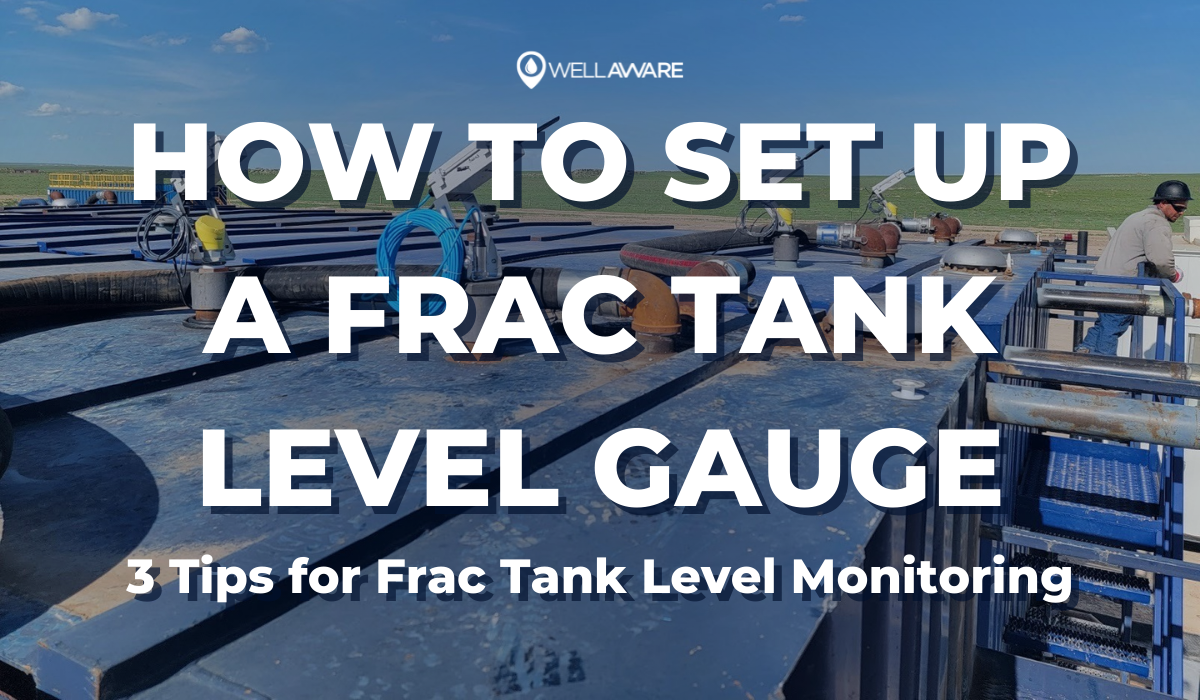
In a pinch? Use our frac tank volume calculator to get a quick strap from your frac tank level gauge.
Frac tanks are essential in the oil and gas drilling process, and as you'll read below, frac tank level gauges and frac tank level monitoring are crucial to supporting frac tank operations.
We rely on these portable metal tanks to temporarily store liquids on site to be used during the drilling process. Frac tanks are big, and we need a lot of them, as most hydraulic frac jobs use a TON of water - the average frac job uses around 4 million gallons, according to the American Petroleum Institute.
So, to keep drilling activity up and running, frac tanks have to stay as full as possible. The best way to make sure this happens is to give drilling operators visibility into frac tank water levels at all times, as well as data for predicting when water might run out (or overflow).
That’s why so many oil and gas companies today are looking for ways to monitor frac tank levels using frac tank gauges or indicators. But there’s more to the story than setting a frac tank gauge and then forgetting about it...
With that in mind, here are a few tips on how to set up frac tank level monitoring successfully for your business.
Here’s the thing about frac tank level gauges: without some work, they will only tell you the level of the water in your tank, not the volume.
But if you’re moving thousands of gallons of water per minute, you need to know the volume of liquid you have on hand. To do this, you need to know how to strap a frac tank properly.
“Strapping” simply means checking and converting frac tank levels into volume measurements. Operators typically do this in one of two ways - they either use a strapping table or a frac tank volume calculator.
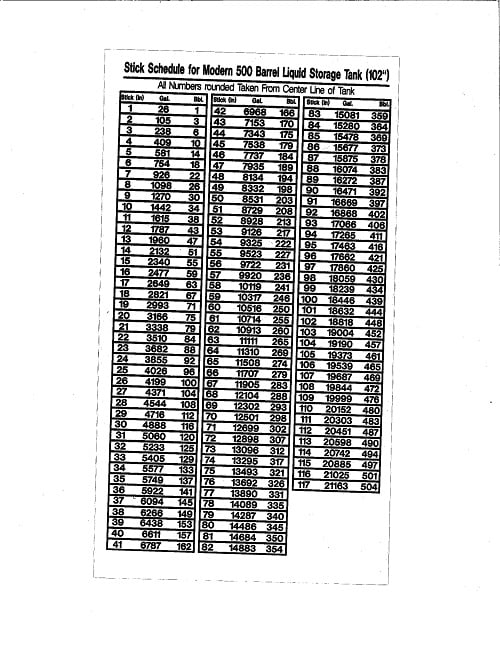
Do you really want to carry around a bunch of paper strapping tables like this one?
Most frac tank rental companies or manufacturers can provide you with a strapping table for your specific tank. If not, you can use our frac tank volume calculator to calculate volume from the current stick level.
The reality is, though, that neither of these methods is ideal. If you’re moving a ton of water in and out of frac tanks, you’re better off installing automated frac tank level sensors that do the strapping for you. These can give you real-time water volume readings on your phone - so you don’t have to carry around a book of strapping tables!
Our frac tank volume calculator makes strapping frac tanks a breeze.
And this leads us nicely into the next section - choosing the right frac tank level gauge.
Monitoring frac tank water levels with frac tank level gauges isn’t too tough. It's like monitoring water levels in any other tank. You just need to choose the right frac tank level indicator, which depends on a few important factors.
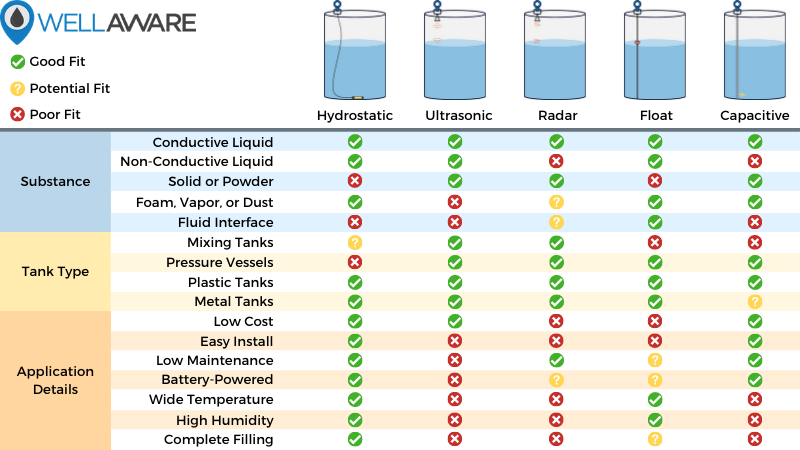
Use this sensor selection chart to help find the right technology for your frac tank level gauge
First, you need to keep material compatibility in mind. If you plan to install sensors inside your frac tanks, make sure their external coatings are compatible with the liquids in the frac tank. If you store water in your frac tanks, this part is easy. Nearly every sensor out there is compatible with water.
If you are storing chemicals or drilling muds in frac tanks, things get a bit more complicated. Chemicals can be corrosive or caustic and can damage your sensor. Choosing frac tank level sensors that aren’t compatible with your chemicals will put them at risk of failure - or worse, bad readings.
If you're having trouble selecting a sensor technology, check out our blog on the best tank level sensors for your application.
The next factor to keep in mind is turbulence and pressure. Drilling operators are constantly filling and refilling frac tanks, creating turbulence that could affect sensor longevity. For instance, bubbles and foam can mess with ultrasonic level gauges. Hydrostatics can sustain damage if they are allowed to float freely in tanks that are constantly moved around, like frac tanks.
Additionally, some sensors won’t work if frac tanks need to be pressure-sealed. In these cases, you’ll need to use reference pressures (i.e., “differential pressures”) instead, adding a bit more complexity to the setup. You can also consider adding a pressure monitoring device to ensure you don't overpressure the vapor-tight tanks.
As with any form of remote tank level monitoring, frac tank level monitoring should keep these things in mind.
Another factor to consider is power. Some sensors require more power than others, with the most power-hungry needing big batteries or solar panels to sustain them. And if you want to implement automation, you’ll need wireless monitoring equipment as well, which also requires power.
The best solution is to find fully autonomous battery-powered sensors. These sensors simplify your setup and allow you to focus on the automation part of your monitoring solution (more on this in the next section).
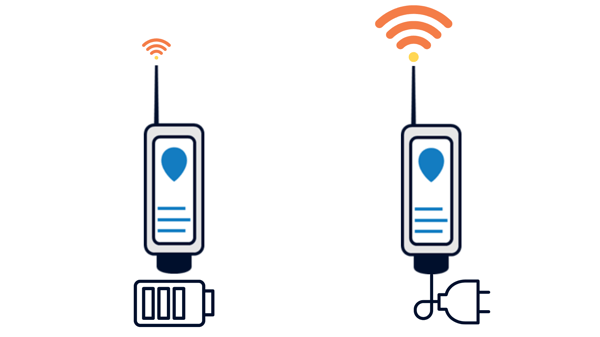
Some wireless frac tank level indicators consume more power than others, so you may need an external power source if you don't select your sensors carefully.
Last, you have to consider sensor accuracy. The right choice for your business will depend on how much fluid you store in your frac tanks and what level of data granularity you need.
For instance, if you plan to use frac tank level monitoring for custody-transfer accounting, you may need a flow meter instead of a tank gauge. If you’re approximating usage or flow rate, on the other hand, a frac tank level gauge may do the trick, provided you have enough data resolution.
After you find the right frac tank level gauge for your business, you can start working on the fun stuff that makes your life easier - automation!
It can be tempting to go the easy route and use a frac tank sight glass or other manual frac tank gauge, but this leaves a lot of opportunity on the table. We’d rather see you install a remotely monitored frac tank level gauge. These devices allow you to see frac tank levels on-site and remotely.
Why exactly does this matter? Because no matter where your drilling operators are, they should have visibility into frac tank levels. Running out of water on a frac job is a nightmare scenario that must be avoided at all costs. And overflowing frac tanks can be just as bad.
Consider this scenario: the pump you use to fill frac tanks is at a pond miles away. Something goes wrong while fracking, and you have to kill your pump ASAP. Without remote monitoring, someone at the drilling site would have to pick up the phone and dial the pump station.
But what if those calls don’t go through? After all, most drilling sites are in remote areas. Even the slightest delay in communication could get you in trouble.
That’s why remote frac tank monitoring is so valuable. You can share updates instantly between drilling sites and remote pump stations. Everyone involved in your fracking operation can also stay on top of tank water levels and track fluids as they come and go, ensuring you never run out of water and never have a spill.
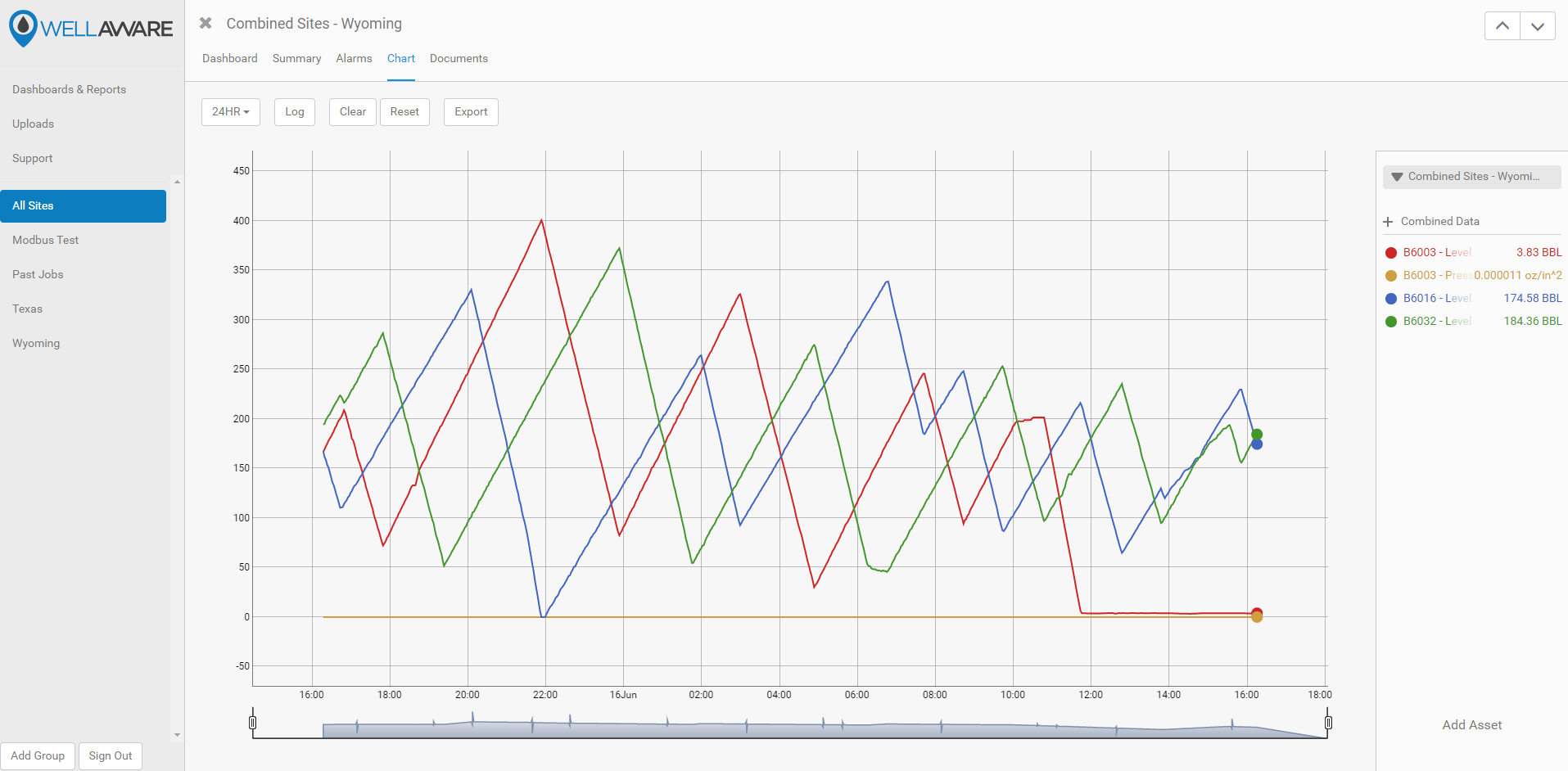
High-resolution frac tank level monitoring can provide insight about frac tank performance like you've never had it before.
Over the years, we’ve installed hundreds of our monitoring devices on frac tanks throughout the country. We make it as easy as possible for you to strap frac tanks and calculate frac tank volumes. We also know how to select the right frac tank level sensor for different end goals and even have an automated monitoring system ready to go out of the box.
Oh, and one more thing - our solution is super cost-effective. If you’re looking for someone to take on the dirty work without breaking the bank, we’re here for you.
Check out our frac tank level monitoring solution for yourself here!
Like what you're reading? Sign up for updates!
Have a Question?